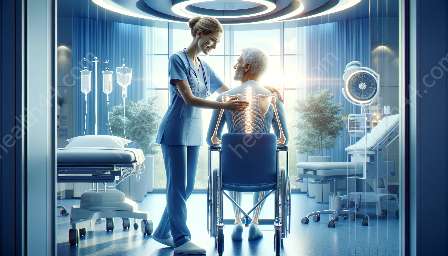Understanding the intricacies of anatomy and physiology is crucial for orthopedic nursing. This topic cluster explores the fascinating world of human anatomy and physiology and its relevance to orthopedic nursing and general nursing practice.
Anatomy and Physiology Overview
Anatomy is the study of the structure of the human body, while physiology focuses on the functions of the body's systems. Together, they provide a comprehensive understanding of how the human body works.
Anatomy
Anatomy delves into the structure of organs, muscles, bones, and tissues. It comprises various systems such as the musculoskeletal, nervous, cardiovascular, respiratory, and digestive systems.
Physiology
Physiology explores the functions and processes of the body's systems. It covers areas such as cellular metabolism, organ function, and the coordination of bodily activities.
Relevance to Orthopedic Nursing
For orthopedic nurses, a sound understanding of anatomy and physiology is essential. They must comprehend the musculoskeletal system, including bones, muscles, and joints, and how these structures contribute to movement and function.
Knowledge of the nervous system is also vital, especially in understanding how nerve function impacts mobility and sensation. Additionally, understanding the cardiovascular system is crucial for managing patients' overall health and wellness.
Connections to Nursing Practice
Beyond orthopedic nursing, anatomy and physiology are fundamental to nursing practice in general. Nurses need a deep understanding of the human body to provide effective care, assess patients' conditions, and administer appropriate treatments.
Understanding anatomy and physiology is particularly important in areas such as patient assessment, wound care, medication administration, and patient education.
Training and Education
Developing a strong foundation in anatomy and physiology requires comprehensive training and education. Nurses undergo rigorous coursework, hands-on training, and clinical experiences to acquire the necessary knowledge and skills.
This training often includes detailed studies of the musculoskeletal system, nervous system, cardiovascular system, and other key areas of the body.
Continuing Education
As medical knowledge evolves, nurses must engage in continuing education to stay updated with the latest advancements in anatomy and physiology. This ongoing learning ensures that nurses provide the best possible care to their patients.
Conclusion
Anatomy and physiology are foundational elements in nursing, especially in the context of orthopedic nursing. A thorough understanding of the human body's structure and functions allows nurses to deliver high-quality care, promote healing, and improve patients' overall well-being.


